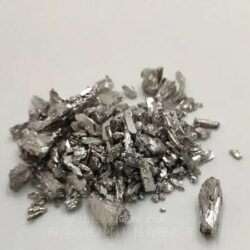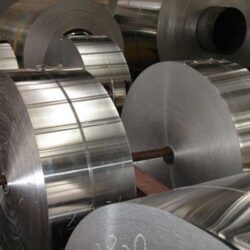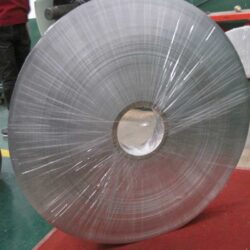Cobalt (Co) is a lustrous, silvery-blue, non-ferrous metal found in smaltite, cobaltite, and erythrite minerals. Cobalt alloy is a kind of metal alloys containing cobalt as the base material.
Cobalt alloy is an alloy formed by adding other alloying elements based on cobalt. Common cobalt alloys include platinum cobalt alloy, samarium cobalt alloy, zirconium cobalt alloy, tungsten cobalt alloy, etc. Nonmagnetic cobalt alloys have high strength and excellent corrosion resistance, and have been proven to be compatible with medical implants.Cobalt alloys have excellent high strength and toughness, high-temperature strength and resistance, and good corrosion resistance.
Cobalt alloys made be categorized based on their key material advantages. These include wear resistance, heat resistance, and corrosion resistance.
Fasteners made from these alloys offer excellent strength and toughness characteristics. These alloys are designed for use in corrosive applications such as seawater, petrochemicals, aerospace, and medical prosthetics and implants.
The properties of cobalt-based multiphase alloys are as follows:
Heat resistant alloys are those that are made to resist elevated-temperature strength and resistance to thermal fatigue. Although they are not as widely used as nickel-based high-temperature alloys, they play a role in temperatures above nickel’s deterioration point and in applications where sulfidation resistance is important.
Corrosion-resistant alloys are those that are designed to resist aqueous corrosion. They are limited in their corrosion resistance in comparison to nickel-chromium-molybdenum alloys.
However, several low-carbon, wrought cobalt-nickel-chromium-molybdenum alloys exist to satisfy the need for a corrosion-resistant cobalt-base alloy.
Wear-resistant alloys are those that are made to resist abrasive wear, sliding wear, and erosive wear. They consist mostly of cobalt and chromium but may also contain tungsten or molybdenum and a small amount of carbon. Cobalt alloys are widely used in the Stellite field.
General knowledge of cobalt based alloy
Metal cobalt is mainly used for making alloys. Cobalt based alloy is a general term for alloys made of cobalt and one or more of chromium, tungsten, iron and nickel. The tool steel containing a certain amount of cobalt can significantly improve the wear resistance and cutting performance of the steel. Stellite cemented carbide containing more than 50% cobalt will not lose its original hardness even when heated to 1000 ℃. Now this cemented carbide has become the most important material for gold containing cutting tools and aluminum. In this material, cobalt combines the carbide grains of other metals in the alloy composition to make the alloy have higher toughness and reduce the sensitivity to impact. This alloy is fused to the surface of the part, which can increase the service life of the part by 3-7 times. The most widely used alloy in aerospace technology is nickel based alloy, and cobalt based alloy can also be used, but the “strength mechanism” of the two alloys is different. The high strength of nickel based alloys containing titanium and aluminum is due to the formation of phase enhancers composed of NiAl (TI). When the operating temperature is high, the phase enhancer particles will transfer into the solid solution, and the alloy will lose strength soon. The heat resistance of cobalt based alloys is due to the formation of refractory carbides, which are not easy to turn into solid solutions and have little diffusion activity. When the temperature is above 1038 ℃, the advantages of cobalt based alloys are fully displayed. This is just right for manufacturing high-efficiency high-temperature engines. Cobalt based alloys containing 20% – 27% chromium are used as structural materials of aviation turbines, which can achieve high oxidation resistance without protective coating. The turbine generator for heating mercury as the heat medium in the nuclear reactor can operate continuously for more than one year without maintenance.
It is reported that the boiler of the generator used in the United States is made of cobalt alloy. Cobalt is one of the few metals that can maintain magnetism once magnetized. Under the action of heat, the temperature at which magnetism is lost is called Curie point. The Curie point of iron is 769 ℃, nickel is 358 ℃, and cobalt can reach 1150 ℃. The coercive force of the magnetic steel containing 60% cobalt is 2.5 times higher than that of the general magnetic steel. Under vibration, general magnetic steel loses almost 1 / 3 of its magnetism, while cobalt steel only loses 2% ~ 3.5% of its magnetism. Therefore, cobalt has obvious advantages in magnetic materials. Cobalt is also widely used in electroplating, glass, dyeing, medicine and medical treatment. Lithium cobaltate made of lithium carbonate and cobalt oxide is the most widely used cathode material for high-energy batteries. Cobalt may also be used to make nuclear weapons. A theoretical atomic bomb or hydrogen bomb is contained in a cobalt shell, which can turn cobalt into deadly radioactive dust after explosion.
Cobalt based alloys are widely used in production and life. The common cobalt based alloys include platinum cobalt alloys, samarium cobalt alloys, zirconium cobalt alloys, and tungsten cobalt alloys.
Platinum cobalt alloy
The platinum cobalt alloy is a platinum alloy formed by adding cobalt based on platinum. Below the solid phase line is continuous solid solution; There are two ordered phases in the alloy system: PtcO and pt3co, which have aucu and Cu3Au type structures respectively. The ordered transition temperatures are 833 ℃ and 750 ℃, and they are both ferromagnetic. For single-phase solid solution, with the increase of cobalt content, the lattice constant of the alloy decreases, the strength property and resistivity increase and reach the maximum value on the alloy containing about 30% (atomic fraction) of cobalt. The Curie temperature increases and the resistance temperature coefficient decreases. The ordering treatment obviously affects the properties of the alloy: increasing the strength, magnetic coercivity (HC) and maximum magnetic energy product (brhc); Curie temperature, and remanence value (BR). The best magnetic properties are obtained on partially ordered alloys and are attributed to the two-phase structure and large magnetocrystalline anisotropy.
PT-50% CO (atomic fraction) (23.3% CO) alloy is an excellent permanent magnet material. It not only has high coercivity, magnetic energy product and magnetic stability, but also has good machinability and corrosion resistance. Main magnetic parameters: br = 0.70 ~ 0.79t, HC = 308 ~ 379ka / m, (BH) max = 80 ~ 93.6kj/m, BD = 0.34 ~ 0.5T, HD = 213 ~ 237ka / m, t = 500 ℃. Although the magnetic properties are inferior to the cobalt alloy containing rare earth elements and the price is relatively expensive, Pt Co alloy is the only permanent magnet material that can meet the requirements in specific occasions, such as those requiring miniaturization, high reliability and corrosion resistance. It is mainly used as hearing aid, magnetron, electronic clock, focusing equipment and motor rotor.
Zirconium cobalt alloy
A tritium storage alloy in AB type compounds. Among them, the tritiated substance uh3 of metallic uranium used for tritium storage has the biggest disadvantage that u and uh3 react strongly with air at room temperature and burn, and are pulverized into ultrafine powder and brought into the tritium process system. Zirconium cobalt hydride zrcohx is an excellent tritium storage material due to its low equilibrium dissociation and decompression at room temperature, low combustion and pulverization, high tritium storage density, and small release percentage of decayed helium-3. Mix high-purity zirconium powder and cobalt powder in proportion, melt them in an argon arc furnace without melting electrode, homogenize and crush the blocks (20-120 mesh) into powder, vacuum degass at 400 ℃ in the chemical bed, fill 1MPa high-purity hydrogen under 10Pa, and conduct 3-4 hydrogenation and dehydrogenation cycles to saturate the hydrogen absorption and fully activate ZrCo. The hydrogen absorption of ZrCo alloy is 205 ~ 224 mol / g, and that of uranium is only 140 mol / g. The hydrogen absorption of zrcoh3 is 1.83-1.97 at.%, After hydrogen absorption, the volume expanded by 18%, and there was a wide equilibrium platform pressure between 590 and 670 ℃, and the reaction enthalpy was 93.6kj/molh2. When ZrCo powder rises to 60 ℃ and cools to room temperature, the color of the stack does not change significantly. Zrcoh2 powder burns slowly after contacting the air for 5 minutes, and cools slowly from room temperature rise of 100 ℃ to room temperature without burning.
Palladium silver cobalt alloy
A palladium alloy. The commonly used PD Ag Co alloy is pdagco35-15, which is a single-phase solid solution with hardness of hb192 and resistivity of 38 Ω· mm / m. Compared with silver copper alloy, it has better corrosion resistance and oxidation resistance, and can be used as the contact of elastic elements working in harsh environments.
Tungsten carbide based cemented carbide
Tungsten carbide based cemented carbide is a kind of cemented carbide mainly composed of tungsten carbide (WC). It has the largest output and the widest application in cemented carbide. It can be divided into the following categories: (1) WC Co alloys, referred to as “tungsten cobalt alloys”, contain 3-25% cobalt as binder, code YG. It can be used as cutter, die, cobalt head, nozzle, piercing tool, etc. (2) WC tic Co alloy, referred to as “tungsten cobalt titanium alloy”, contains 4-10% cobalt as binder, 5-30% TIC, and the rest is WC. Code YT. It is mainly used as a tool for cutting steel. (3) WC tic tac (NBC) – Co alloy, abbreviated as “general alloy”, code YW, is mainly used as cutting tools. (4) Tungsten carbide based corrosion-resistant alloys, including WC Ni, WC Ni Cr and WC CoCr, are mainly used as corrosion-resistant and wear-resistant parts, such as sealing rings, cylinder liners, ball pen tips, etc.


